Why Steel Framing?
When choosing a construction material for your next project, steel framing stands out as a superior option. Known for its robustness and rapid assembly, steel framing offers a range of benefits over traditional materials. With prefabricated components, steel framing ensures quick and efficient on-site construction while maintaining high standards of strength and durability.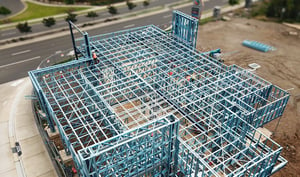
What is Steel Framing?
Benefits of Steel Framing
- Less Waste
- Termite-Proof
- Insecticide-Free
- Resistant to Mold and Rot
- Fire-Resistant
- 100% Recyclable
- Lightweight
- Exact and Straight
- Design Versatility
Reducing Waste with Steel Framing

Steel framing offers a more sustainable construction process by generating significantly less waste compared to traditional wood framing. Its precise manufacturing and advanced design techniques lead to efficient material use, with typical waste around 2% compared to wood framing’s 20% wastage. That 2% waste from steel framing can also be recycled, resulting in 0% waste to landfill.
Steel is 100% recyclable and can be reused repeatedly without losing integrity, while using recycled steel helps preserve raw materials. For example, constructing a 2,000-square-foot home can use steel from six scrapped cars, reducing the need to cut down trees. Prefabrication of steel panels in a controlled environment further minimizes on-site waste and environmental impact.
Steel Framing is Termite-Proof

Steel framing provides a robust, termite-proof solution, eliminating the need for chemical treatments or repairs due to pest infestations.
Termites cause billions in damage globally each year, particularly in regions like the U.S., Mexico, Africa, South America, and Australia. Steel’s resistance to pests makes it a superior choice to timber, which can suffer severe structural damage from termite activity.
Cold-formed steel (CFS) or light gauge steel (LGS) offers a long-lasting, low-maintenance alternative, as steel does not warp, rot, or degrade over time. This durability aligns with recommendations from the International Residential Code (IRC) for termite-resistant materials.
Healthier Living with Steel Framing

Steel framing’s natural resistance to pests eliminates the need for toxic insecticides and chemical preservatives often required in traditional wood construction. These chemicals can leach into the environment, posing health risks and contributing to pollution.
By choosing steel, you avoid these chemicals, creating a healthier living and working environment. Steel’s resistance to termites and other pests not only prevents damage but also improves indoor air quality by avoiding the emission of volatile organic compounds (VOCs), leading to a cleaner, safer building.
The Durability of Steel Framing

Steel framing is immune to moisture-related issues like mold and rot, ensuring long-term structural integrity even in damp or humid conditions. Unlike wood, which absorbs moisture and becomes susceptible to decay, steel remains unaffected.
This resistance to moisture-related problems makes steel an ideal choice for environments prone to mold and mildew, which can cause health issues such as respiratory problems and allergies. Additionally, steel framing enhances indoor air quality by not supporting mold growth.
The Safety of Steel Framing

Steel framing is non-combustible, providing exceptional fire resistance and increasing overall building safety.
Unlike wood, steel does not ignite or contribute to the spread of flames, which offers critical time for occupants to evacuate in the event of a fire. Steel withstands high temperatures and reduces the total amount of combustible material in a building.
Fire-resistant coatings can be applied to steel to delay structural damage, further enhancing safety and potentially lowering insurance premiums. Steel framing maintains its fire-resistant properties over time, ensuring long-term safety.
The Sustainability of Steel Framing

Steel is the most recycled material on Earth, making it an eco-friendly choice for construction. It can be recycled repeatedly without losing its strength or properties.
Each steel frame contains at least 25% recycled content, with some products reaching 100% recycled material. Building an average house with steel requires recycling six to seven cars instead of cutting down up to 50 trees.
Steel’s recyclability and minimal on-site waste contribute to sustainable construction practices, reinforcing its position as one of the most environmentally friendly building materials.
The Efficiency of Steel Framing

Steel framing offers a lightweight design combined with exceptional strength. Its high strength-to-weight ratio allows steel to support more load relative to its weight compared to traditional materials.
This efficiency is due to the engineering of cold-formed steel, where C-shaped studs enhance strength significantly. Compared to dimensional lumber, steel’s strength-to-weight ratio is up to seven times greater, reducing the load on foundations and simplifying handling and transport.
This efficiency leads to faster, more cost-effective construction.
The Precision of Steel Framing

Steel framing components are manufactured with exceptional precision, ensuring exact dimensions and straightness. This precision minimizes alignment issues and the need for rework.
Produced to stringent specifications in a controlled off-site setting, steel components are crafted to exacting standards, reducing errors and ensuring the finished product matches the design.
Unlike wood, steel does not warp, twist, or shrink, providing consistent stability and reducing maintenance needs.
The Flexibility of Steel Framing

Steel framing offers remarkable design flexibility, supporting expansive open spaces and larger spans without the need for excessive columns.
This flexibility allows for modern, open floor plans while maintaining perfectly straight walls. Steel frames work well with various traditional finishing materials, providing limitless design possibilities and enabling creative architectural solutions.
Its strength and flexibility facilitate innovative designs while ensuring structural integrity and compatibility with diverse finishing options.
Steel Framing vs Timber Framing
Timber framing faces supply chain issues, structural limitations, and fire risks, driving a shift to light steel framing. Steel offers superior strength, durability, and stability, without twisting, warping, or buckling. Its non-combustible nature and resistance to pests and moisture lower insurance costs and reduce repair risks, offering long-term savings and peace of mind for builders and property owners.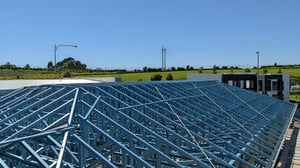
How is Steel Framing Made?
Steel framing construction is a design-led process, often referred to as Design for Manufacturing and Assembly (DfMA), which ensures precision, efficiency, and reduced on-site labor. The process is divided into three main stages: Design & Engineering, Manufacture & Panelization, and Construction.
Applications for Steel Framing
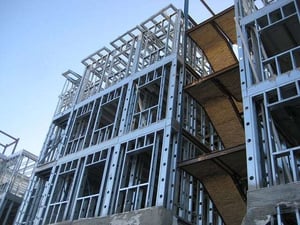
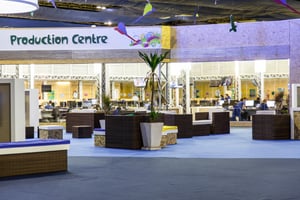
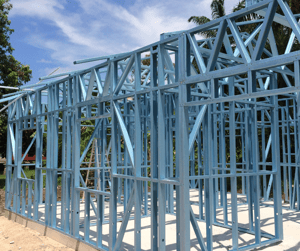

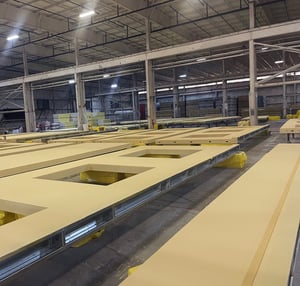

Curious What You Need to Get Started With Steel Framing?
Use this simple estimator to help you.
With just a few pieces of information from you, this estimator will help you determine your steel gauges, space requirements, completion timing, capacity and recommended FRAMECAD roll-forming equipment models.


Let's take your business to the next level.
Frequently Asked Questions
Cold Formed Steel (CFS), also known as Light Gauge Steel (LGS), is a sustainable and versatile material widely used in modern construction. It's popular due to its environmental benefits, cost-effectiveness, and efficiency.
CFS is made by combining iron ore and steel scrap in a Basic Oxygen Furnace (BOF), rolling it into thin strips, and applying a protective zinc coating through galvanization. The steel is then shaped into its final form at room temperature, using specialized machinery—hence the term "cold-formed."
LGS is manufactured by cold-forming thin sheets of steel into specific shapes at room temperature. This process results in strong, yet lightweight, components that are easy to transport and assemble. Because of its high strength-to-weight ratio, LGS Framing offers significant design flexibility while also being resistant to common issues like rot, termites, and warping.
Yes. A steel frame actually allows more protection for the occupants since it provides a direct path to the ground in the event of a lightning strike. This reduces the likelihood of explosions or secondary fire.
Learn More About the Benefits of Steel Framing
Frequently Asked Questions
See more steel frame questions answered here.Absolutely. Galvanized steel won’t crack, shrink, splinter, creep, split, warp, swell, or rot. It’s also immune to termites and other insects that damage wood.
Yes. Steel’s inherent strength and non-combustible nature provide enhanced protection for your home and family. Steel framing can significantly reduce the risk of damage from high winds, fire, and lightning.
Steel framing is an environmentally responsible choice. The steel industry has a global recycling rate of 86% - the highest of any industry, making it a highly sustainable building material. Any scrap generated during construction is fully recyclable and should never end up in a landfill.
Steel-framed walls don’t expand, contract, or warp with temperature or humidity changes. This stability helps maintain a tighter building envelope, keeping heating and cooling inside the home - reducing energy loss and lowering utility bills.
Yes. Steel framing allows for wider spans with fewer interior load-bearing walls, making renovations easier and offering greater flexibility in redesigning spaces.
Yes. Steel framing enhances safety by providing a direct path to the ground if lightning strikes. This controlled grounding reduces the risk of explosions, electrical surges, or secondary fires, offering greater protection for occupants.
Ready to Reframe How You Build?







